The Lexus CT200h Is Dead, Though It Was Way More Popular Than the HS250h You Forgot Existed
The current 2017 model year will be the last for the Lexus CT200h.
An indirect successor to the Lexus HS250h sedan, the Lexus CT200h will end a seven-year model run in the United States that resulted in more than 90,000 sales.
Imported from Miyawaka, Japan, the Lexus CT has seen its average U.S. monthly output fall 58 percent over the last three years. Never a tremendously popular entry-level luxury car, the hybrid-only Lexus was forced to compete against very successful luxury sedans from Mercedes-Benz and Audi — CLA and A3, respectively — in the latter portion of its tenure.
The Lexus couldn’t compete.
Study: Toyota and GM Poised to Grow Market Share; Not so Fast, FCA
Which automaker stands the best change of gobbling up more of the U.S. light vehicle market in the near future? According to the results of a newly released study, and not entirely unsurprising, it’s two of the world’s largest automakers.
General Motors and Toyota are each planning a slew of new and refreshed products over the next few years — something which should serve to lure buyers away from other brands. Among domestic automakers, one brand is forecast to suffer at the hands of its Detroit rival’s success. You know the one.
Here Are All the Vehicles German Auto Brands Sell and Build In the United States
Terrible. We’re going to stop that.” – President Donald Trump
Through the first four months of 2017, Germany-based automakers and their respective subsidiary brands have sold 413,000 new vehicles in the United States.
At a minimum, 28 percent of those vehicles were built in the United States at assembly plants in Alabama, Tennessee, and South Carolina. According to Automotive News, BMW, Mercedes-Benz, and Volkswagen combined to produce 281,519 vehicles, the bulk of which were destined for export.
But to avoid even a faint whiff of statistical manipulation, TTAC has compiled the complete U.S. sales and production picture for each of these manufacturers. We present them to you with no limited commentary.
Overseas Demand Boosts Ford Mustang as Domestic Sales Wane
The Ford Mustang, a nameplate actually deserving of the word “iconic,” is no less vulnerable to the whims of the market than any other model. As domestic light vehicle demand in North America cools off, so have Mustang sales.
Fortunately for Ford, the automaker took it upon itself to fling Mustangs to every corner of the world for its most recent generation, and buyers in 140 countries are now able to take delivery of the original pony car. That volume, while not America-like, has bolstered sales.
Dealer Lesson: JM Lexus, the Most Successful Lexus Dealer In America, Is a No-Dicker-Sticker Store
Half an hour from Fort Lauderdale, in Margate, Florida, sits JM Lexus, the highest-volume Lexus dealership in the United States.
Even by Lexus standards, where throughput is the best of any premium automaker operating in America, JM Lexus’ 8,000-unit new vehicle sales tally in 2016 was striking. That’s more than 150 new luxury cars, crossovers, and SUVs sold each week. That’s roughly six times the volume achieved by the typical Lexus dealer.
And JM Lexus, perennially the top Lexus dealer in America, does so as part of the Lexus Plus strategy: no negotiating, a single representative per customer, fixed prices for new and used cars as well as service fees and accessories.
Perhaps there’s a lesson to be learned by Lexus’ other dealers. For the time being, according to Automotive News, only 5 percent of Toyota’s premium brand stores operate under the Lexus Plus model.
Freed From Gasoline, the 2017 Smart Fortwo Drops Its Price and Adds Range
Will anyone notice? Mercedes-Benz certainly hopes so, as it recently choose to ditch gasoline powerplants altogether and make the Smart sub-brand an all-electric affair.
The automaker announced pricing and specifications for its 2017 Smart Fortwo Electric Drive coupe and convertible today, billing the two-seater as one of the cheapest EVs you can buy. The droptop variant remains the only electric convertible you can get your hands on, should that be your thing.
While many scratch their heads and wonder why Smart continues to exist in North America, the automaker hopes to entice consumers with a lower starting price and added range.
What Happened To Ford's U.S. Market Share During The Mark Fields Era?
Prior to this morning’s announcement that outgoing Ford Motor Company CEO Mark Fields is “retiring,” Fields was in charge at the Blue Oval for nearly three years. Just a little more than ten quarters, to be more precise.
In eight of those quarters, Ford Motor Company U.S. market share declined, year-over-year.
Ford was not without excuse, of course. There was always market share to be taken if Ford wanted it. But an attempt to limit reliance on daily rental fleet sales, particularly with Ford’s passenger car division, did the automaker’s market share no favors. Ford’s transition from old F-150 to the new aluminum-bodied model was a major switch, too, and sales growth during the transition phase wasn’t easy to come by.
Nevertheless, Ford’s U.S. market share didn’t nosedive during the Mark Fields era. The burden on incoming CEO Jim Hackett’s shoulders won’t be the elevation of Ford Motor Company market share in the automaker’s home market.
No, it’s the price of a Ford share that matters right now.
The Mitsubishi Lancer Lives! (Sort Of)
As Mitsubishi prepares to launch a new small crossover, the Mitsubishi Eclipse Cross, Mitsubishi’s car lineup continues to shrink.
The Galant died in 2012. The Mitsubishi Lancer, it was revealed earlier this year, will cease existence in the U.S. market later this year. But the Lancer’s American goodbye, via a blacked-out Limited Edition, won’t represent its final North American goodbye.
Mitsubishi Canada still wants the Lancer, the brand’s best-selling model as recently as last year, at least until 2018. And Mitsubishi Canada won’t bid farewell to the Lancer until the car can be given “ a uniquely Canadian sendoff.”
We assume this means Tim Hortons’ double-doubles inserted in the cupholders straight from the factory along with a hockey bag in the trunk and a curling broom roof rack.
Camaro Comeback? Chevrolet Camaro Outsold Ford Mustang In April 2017, Sixth-Gen's Best Month Yet
General Motors reported 8,737 Chevrolet Camaro sales in the United States in April 2017, a 17-percent year-over-year increase for GM’s third-best-selling car last month.
For the sixth-generation Camaro, a car that had a decidedly unimpressive launch phase last year after routinely outselling the Ford Mustang for half a decade, April 2017’s improvement led to the best month yet. Not since the oft-discounted fifth-generation Camaro was nearing the end of its line in May 2015 has Camaro volume been so strong.
As for the headline-creating bits, yes, the Chevrolet Camaro beat the Ford Mustang in April 2017 U.S. sales. Camaro wins. Camaro is the victor. To the Camaro go the spoils.
GM must take time to enjoy its Camaro’s victories. Once routine, they’re hardly common now.
Mazda Wants 2 Percent U.S. Market Share, But Not Just Any Ol' 2 Percent Market Share
“I am not comfortable with 2 percent. I’m comfortable with a good 2 percent.”
– Masahiro Moro, President and CEO, Mazda North American Operations
Mazda’s U.S. market share fell to a 10-year low in 2016 and hasn’t noticeably recovered in the first four months of 2017. A small lineup with no presence in key segments limits Mazda’s chances of becoming a major automaker.
But Mazda doesn’t want to be a major automaker. Mazda wants to be a small but profitable automaker with profitable dealers and loyal buyers.
Mazda also wants to carry greater sway in the U.S. market than it does at the moment. Only slightly. Fractionally more. Marginally, almost imperceptibly more. Only 1.7 percent of the new vehicles sold in the United States are Mazdas. Mazda wants 2 percent, surely a reasonable and easily attainable goal.
But Mazda’s North American boss, Masahiro Moro, has no intention of jumping up to that 2-percent marker rashly or hastily.
Used Car Prices Falling Amid Stock Overflow
A surge in vehicles coming off lease agreements has boosted used vehicle inventory in the United States — a trend that’s proving to be good news for dealers and a headache for Ford, General Motors and FCA.
Three or four years ago, used vehicle inventories were at a low point. U.S. automakers weren’t offering bargain leases during the recession and were apprehensive to begin doing so in the years following. Such isn’t the case anymore, with an estimated 12 million low-mileage vehicles set to come off lease by 2019, according to Reuters. Customers leased those vehicles between 2014 and 2016 when automakers experienced a sales and leasing boom.
It's Official: The Nissan Quest Is Dead, Discontinued, Defunct, Cancelled
“The Nissan Quest has been discontinued for the U.S. marketplace.”
– Nissan Sr. Manager, Product Communications, Dan Passe
TTAC has been tracking the Nissan Quest’s failure in the U.S. marketplace for some time. Just ahead of Christmas last year, when it appeared as though the Quest was surely dead in the water, Nissan confirmed that there would in fact be a 2017 Quest.
But when tipped off by an industry insider last February, we noticed that Nissan was reporting higher-than-normal Quest sales despite lacking any meaningful inventory. That’s right — the 2017 Nissan Quest was essentially a fleet-only vehicle.
Most of us stopped tracking the story. After all, it’s a minivan, and a long-ignored minivan, in a market where buyers are currently turning away from minivan in droves. TTAC’s Corey Lewis didn’t quit, however. Like a dog with a bone, Corey discovered that the Quest was missing from NissanUSA.com. Under the Minivans & Vans section, there’s no minivan. We asked Nissan, not for the first time, whether the Quest is dead.
The Nissan Quest is dead. Gone. Expired. Terminated.
2017 Is Set to Be The Worst Year For Minivans Since The Depths Of Recession, Unless The New Honda Odyssey Makes Hay
U.S. minivan volume has decreased in nine consecutive months as the American minivan category lost 70,000 sales since August 2016, year-over-year.
As a result of the steady decline in a minivan segment that essentially features only five vans, 2017 is set to be the lowest-volume year for the category since 2009. At the rate achieved through the first one-third of 2017, Americans will purchase and lease only 452,000 minivans in 2017, just 2.6 percent of the overall market and only slightly more minivans than Americans purchased and leased when the overall industry collapsed to the lowest level in 27 years.
Or perhaps not. Fresh product is the carnauba wax bath balm for the soccer mom segment’s tired flesh. And a new 2018 Honda Odyssey is due at dealers in the coming weeks. (We’ll have a review of it next week.)
Is a new Odyssey the answer for America’s minivan woes?
Honda believes so.
Subaru Incentives? Maybe You'll Soon Get A Deal On An Outback Or Forester
Although Subaru is selling more new vehicles than ever before, particularly in North America, the automaker’s run of record profits came to end in the fiscal year ending March 31, 2017. Subaru made money, no doubt, but Subaru’s operating profit was down 27 percent compared with the prior year.
Subaru’s revenue grew 3 percent while global volume rose 11 percent to more than 1 million vehicles, according to Automotive News. That’s the kind of information that matters to investors.
As for consumers, it’s the information from Subaru CEO Yasuyuki Yoshinaga that matters most. Saying the U.S. market has peaked, Yasuyuki Yoshinaga claims, “The market environment has increasingly become tougher.” In a tougher market, Subaru’s largest market, an automaker must either give way or make way.
Subaru’s decision? “We will carefully examine the situation and will take the necessary steps to maintain our sales, including incentives,” Yoshinaga says.
You heard right. Subaru, notorious for limited supply and limited scope for deal-making, might just offer you a bit of a discount on your next Outback or Forester.
There Are Hardly Any Chevrolet Impala Buyers, But The Few Remaining Impala Buyers Are Willing To Pay
We knew General Motors’ strategy for the tenth-generation Chevrolet Impala would be different when the big sedan was launched in 2013. No longer intended to be the fleet queen and a hugely discounted showroom sedan, the tenth-gen Impala moved upmarket.
Consequently, sales decreased, and did so in dramatic fashion. The Impala’s U.S. volume in 2014 was down by more than half compared with 2007 output. Sales continued to fall, with the Impala’s 2016 calendar year result of 97,006 U.S. sales representing the sixth consecutive year of decline.
The Impala’s numbers are getting lower. Much lower. After averaging more than 8,000 monthly Impala sales in 2016 and nearly 10,000 per month as recently as 2015, Impala volume has cratered in early 2017. Only 3,213 Impalas were sold in the United States in April 2017, down 73 percent compared with the Impala’s April average over the last five years.
But don’t assume the scarcity of Impala sales will translate to an abundance of deals at your local Chevrolet dealer. Impalas are thin on the ground, and GM isn’t playing games with incentives.
Mazda Makes a Bet on Popularity of Upcoming CX-5 Diesel
Diesel power has traditionally proved a tough sell in the United States, at least among light-vehicle buyers. If it doesn’t belong on a worksite, chances are a vehicle’s engine choices have remained gasoline-only since the model’s debut.
While the high-mileage technology suffered a black, sooty eye from the Volkswagen affair, several automakers are gambling on Americans want of higher torque figures and improved fuel economy — the rosy promises of diesel motivation. Mazda, the only automaker without a hybrid or electric vehicle in its stable, plans to add a diesel CX-5 to its gas-only U.S. fleet later this year.
The automaker knows exactly how many it wants Americans to buy. If this litmus test on wheels reaches the pre-determined mark, expect to see more zoom-zoom diesels appearing in local showrooms.
Price War: Mid-Year Changes Coming as Two Rival Crossovers Battle for Sales
America’s insatiable crossover thirst has made the Nissan Rogue — a relative newcomer to the segment — a sales juggernaut and a top rival to the likes of the Toyota RAV4 and Honda CR-V.
As summer approaches, two of those vehicles are undergoing a sales strategy shift to better position the models against each other. No, one of the models isn’t the new-for 2017 CR-V. Nissan and Toyota, however, hope to draw in more customers by tweaking prices and content on the Rogue and RAV4, though the two automakers are going about it in very different ways.
Picture Time: The Couple Really Needs Your Help
You’re all too familiar with that image, aren’t you? She’s laughing hysterically or having some sort of crisis. Her male friend, hand outstretched to receive his car key, looks on in amazement at her awkward and overblown reaction within this sales situation. They are The Couple, and they are stock image gold.
Want more of them? You got it.
You Know The Future For Mini MPVs Is Bleak When Even The Europeans Don't Want Small Vans
America’s mini-MPV market is dead. It was hardly ever alive.
Canada’s mini-MPV market is dying. The Chevrolet Orlando couldn’t make a go of it. Kia Rondo and Mazda 5 sales are 80-percent lower than they were a decade ago.
And if ever you thought North America’s mini-MPV market could be regenerated based off the strength of Europe’s compact minivan segment, you thought wrong. Even the Europeans — long lovers of small, family-friendly vehicles with affordable price tags, economical engines, and notable space efficiency — are turning away from mini-MPVs. In droves.
Why buy a minivan when you could have a rugged off-roader instead?
Regular Passenger Cars Are Tanking As Performance Variants Hold Their Own
There’s a reason we run Midsized Sedan Deathwatch. North American consumers want space for six dogs, and nothing’s going to stop them from forking over big bucks for cargo volume and a third row. Traditional passenger cars be damned.
Increasingly, it looks like the market has been condemned — it’s down 12 percent over the first four months of this year. But the shrinking market presence isn’t solely the domain of the midsize. Compacts are in trouble, too. Full-size cars? You know the answer. However, if the vehicle in question started out as a conventional grocery getter but piled on the horsepower before leaving the factory, chances are it isn’t hurting.
The Kia Niro Is A Hit, Thanks Be Unto TTAC (And The Crossover-Hungry Universe)
It’s a hybrid. It’s attractive. It’s affordable. It’s the Kia Niro. Launched at the beginning of 2017, the Kia Niro is already proving to be a surprisingly successful hit for Kia Motors America.
As competitors quickly fade into the background, Niro volume is rising steadily each month, with the Kia attracting buyers for a wide variety of reasons, not just fuel efficiency.
In fact, the Kia Niro isn’t that fuel efficient compared with other dedicated hybrids on the market today.
But the Kia Niro is a crossover. (Allegedly.) And Niro’s amalgam of characteristics — hybrid, design, affordability, crossover image — has returned a degree of sales success simply not enjoyed by most dedicated greenmobiles.
Resurrected TVR Has a New Car, a Lineup of Buyers and an Old Model Name
It’s exciting times for the independent British automaker. TVR, which reappeared on the automotive scene in 2013 after an absence of seven years, plans to unveil a production sports car in September.
Apparently, many TVR aficionados were itching for an opportunity to get their hands on a boutique vehicle from the low-volume automaker, money in hand. When the company showcased a prototype at a private event, hundreds ponied up deposits for a vehicle that might appear bearing a familiar name.
Auto Industry Has Its Fingers Crossed for Trump's $1 Trillion Infrastructure Plan: Toyota Exec
As automakers dial back sales projections in a year that’s seen a rough start, the industry could be holding out hope for a legislative solution to lagging demand.
Toyota North America CEO Jim Lentz made this claim during the opening of the company’s expanded Ann Arbor research and design center on Thursday, adding that incentivizing new vehicles to draw down bulging inventories can’t continue forever. In his view, automakers are keeping extra vehicles on hand for a reason, not just because production hasn’t adjusted for slow sales.
Lentz, like other auto executives, is hoping for a sales bump in the event the Trump administration green-lights its proposed $1 trillion infrastructure plan.
The Pretty New Porsche Panamera Is Already Way More Popular Than the Ugly Old Porsche Panamera Ever Was
The first second-generation Porsche Panamera I ever spotted was missing its front end. It was still distinctly more attractive than the first-generation Porsche Panamera ever was.
My house is near the CN Autoport in Eastern Passage, Nova Scotia. Dozens of stevedores drive mostly European-built new vehicles off Wallenius Wilhelmsen ships to parking lots near a main road, incidentally known as Main Road. Typically, if I time my drives past just right, I see long lines of new cars, such as the British-built Honda Civic Hatchback or the Volvo V90, weeks before a single one arrives at your local dealer.
Ever so slightly closer to my home than the Autoport itself is a smaller building where the damaged vehicles go. Today, there’s a Mercedes-Benz CLA-Class, sans rear bumper, parked outside. A few months ago, mere seconds before feasting my eyes upon a line of second-gen Porsche Panameras, I saw the aforementioned damaged Panamera. “Maaaaaan, that car is pretty.”
And then I remembered the old Panamera, vomiting a bit in my throat at the thought. And then I saw Porsche’s April 2017 U.S. sales figures. Scroll down, scroll down, there it is: Panamera. 1,098 sales.
Double its typical monthly output. 26-percent better than its previous best. Triple April 2016’s volume.
And proof people prefer pretty.
Oil Lamp: Diesel Volkswagens Prove a Hot Sell in April, Boost Company's Fortunes
Despite having the worst public image since the Ford Pinto or Chevrolet Vega, Volkswagen’s sidelined 2015 2.0-liter diesel models flew off lots after being approved for sale in mid-April.
A crop of about 11,000 unsold TDIs loitered on dealer lots around the U.S. after being banned from sale by the Environmental Protection Agency in September 2015. In a weak month that saw numerous automakers sink on the sales charts, Volkswagen was a bright light, posting a 1.6-percent increase over April 2016. Much of that success came from still-polluting diesels.
So much for stigma.
What's Working at Ferrari: Profit Rises Along With Demand
Thanks to the increasing wealth of the world’s elite, supercars have remained in fashion. Ferrari profits surged upward in the first quarter of 2017 as the Italian automaker continued a scheme designed to gradually accelerate volume.
The brand’s net income over the first three months of 2017 climbed to 124 million euros ($135 million) from 78 million euros during same period last year. Meanwhile, overall revenue increased 22 percent to €821 million, helped largely by engine sales to Fiat Chrysler’s Maserati — the car you buy when you wanted a Ferrari, but fell just shy of being able to afford one.
Pickup Trucks Tanked In April 2017, Titan Quadruples
After improving in 11 consecutive months, U.S. sales of pickup trucks declined 4 percent in April 2017.
8 of the 11 truck nameplates on offer in America sold less often in April 2017 than in April 2016, causing declines in both the dominant full-size pickup truck sector and in the until-this-year burgeoning midsize category.
One month does not a trend make, but April’s downturn didn’t represent the first batch of evidence suggesting a forthcoming pickup truck sales slowdown.
Granted, not all trucks are heading in the same direction.
Nissan Titan sales quadrupled in April 2017.
Lenders Snatch Back the Piggy Bank After Taking a Hit on Auto Loans
April was the fourth consecutive month to see U.S. auto sales underperform compared to 2016, leading many to speculate that the long-awaited slump has finally arrived. New car sales aren’t the only thing slipping, as used vehicle values — diminished by a flood of off-lease stock and new car incentives — is on the same downward trajectory.
At the same time, the country’s biggest auto lenders have taken a look around and do not like what they see. No bank wants to be stuck with a low-value repossessed car, so purse strings are tightening across the United States. Securing that next loan just became harder.
Of course, this is the last thing any automaker wants to hear.
Midsize Sedan Deathwatch #11: Blame Midsize Cars For America's Passenger Car Decline
Why did America’s passenger car market tumble 11 percent in April 2017?
Midsize cars deserve much of the blame.
Why is America’s passenger car market down 12 percent through the first four months of 2017?
Midsize cars deserve most of the blame.
U.S. Auto Sales Brand-By-Brand Results: April 2017 YTD
U.S. auto sales declined nearly 5 percent in April 2017, the fourth consecutive month where U.S. auto sales failed to live up to 2016’s prodigious pace.
Auto sales are now down by more than 2 percent through the first one-third of 2017, a year-over-year decline of roughly 130,000 sales caused in no small part by a bevy of Fiat Chrysler Automobiles’ brands. Chrysler’s 27-percent year-over-year downturn is the worst decline of any brand. Fiat and Jeep — yes, Jeep — have each posted double-digit percentage losses. Dodge is down, too.
But it’s not just FCA. Through the end of April, 18 different auto brands have lost ground, from Lexus and Acura through to Cadillac and BMW, with Buick, Chevrolet, Hyundai, Kia, and Toyota in their midst.
It's Looking More Likely That the ES is the New Lexus GS
In a manner of speaking, that is. A recent report cast doubt on the future of Lexus’ rear-drive performance sedan, the GS, claiming that development of a next-generation model was off the table. That would make next year the GS’ last.
While Lexus wouldn’t confirm the report, a spokesperson’s choice of words was enough to add to the rumor. In a marketplace that’s big on SUVs and downright miserable to cars, it would make sense for Lexus to get ahead of the “too many cars” problem faced by the likes of Hyundai and pare down its lineup.
Now, another report says Lexus will call on a different model to fill the gap.
Kia Quietly Kills Off a Model You've Already Forgotten About
We’re not talking about the K900 flagship sedan, as Kia’s luxo barge actually gets people talking — mainly due to its slow sales and LeBron James connection. No, the model lying in the casket this morning bowed out of people’s minds long before it vanished from Kia’s product cycle.
The Forte Koup.
Kia has confirmed there’ll be no future for the two-door variant of its popular Forte, though the writing was on the wall for some time. On the company’s website, too.
Detroit Money City: GM Leads the Pack as Ford Profit Sinks
What a difference a few (hundred thousand) recalls make. In a sales market best described as stagnant, a widespread vehicle glitch can dog an automaker’s balance sheet. That seems to be the case at Ford Motor Company, which saw its first-quarter profit fall 35 percent on a combination of factors — not the least of which was a pair of recalls of engine fires and faulty door latches.
Elsewhere in the domestic market, General Motors rode to the financial finish line with a record post-bankruptcy net income while Fiat Chrysler Automobiles climbed further into the black.
Sedans and Missiles: Hyundai Slams Into Another Sales Roadblock
The frustration never seems to end for Hyundai executives. After last year’s Korean labor strife and political scandal, the brand now faces flagging fortunes in the all-important North American market, all thanks to a car-heavy lineup that once guaranteed piles of profit.
Now, the automaker faces the same problem in another global growth engine — China. While that market has also discovered its love for crossovers and SUVs, there’s another problem that Hyundai can’t turn around by rushing a new vehicle to production. Hyundai, it seems, can’t do a damn thing about high-altitude defensive missiles.
Cadillac Prepares For Perpetual Party, Forecasts Buoyant U.S. Auto Sales Demand While Relying On China
“Levels that were once seen as excessive are now sustainable.”
—Uwe Ellinghaus, Chief Marketing Officer, Cadillac
Cadillac expects to see auto sales in the United States in calendar year 2017 fall just below 2016’s best-ever results, which GM’s premium brand considers a positive sign for the U.S. auto industry and Cadillac.
While the decline reported America’s auto industry in March 2017 drew headlines because 2017’s first-quarter encompassed three consecutive months of year-over-year decline, Cadillac’s chief marketing officer, Uwe Ellinghaus, views the results through another lens.
“What they call a cooling off I say is the best thing that has ever happened,” Ellinghaus told Automotive News. “We don’t see that the party is over. It’s continuing.”
Cadillac? Party? Huh?
Honda CR-V Hybrid Debuts in China, Waits to Leap Across Pacific
It’s really a matter of when, instead of a question of “will it?”
This week’s Shanghai auto show saw the premiere of an electrified Honda CR-V that should hit Chinese dealers in the second half of this year. When that vehicle will get a chance to battle rivals on American turf remains a secret, but it’s abundantly clear that the model has a future on this continent.
Did Anybody Believe The Lexus NX Would Be This Popular?
Pretty? No.
Popular? Most definitely. In fact, the Lexus NX is twice as popular as Lexus anticipated.
The Lexus NX, a crossover you must never confuse with the Nissan NX, is marketed in the United States both in NX200t and NX300h variants. At the New York International Auto Show three years ago, Lexus revealed the brand hoped to sell around 26,000 NXs per year; roughly 2,200 per month. At that point, in the lead-up to the NX’s 2014 Q4 launch, there were two schools of thought. One, the NX was so ghastly to behold Lexus surely wouldn’t sell 2,200 per month. Or, because Lexus is such a luxury crossover powerhouse, even the NX — with a face even a mother couldn’t love — will be more popular than Lexus anticipated.
Dealers believed Lexus’ forecast was on the low side.
But could anyone have expected the Lexus NX would be more than twice as popular as originally forecasted; that the Lexus NX would be America’s fifth-best-selling luxury utility vehicle; that the NX would account for one-in-five Lexus sales in America?
It's Raining Fiats … on Dealers That Already Can't Move Them: Report
Say you’re a dealer with a backlog of slow-selling models. What’s the last thing you would want?
The correct answer would be a springtime deluge of more of the same, whether you asked for it or not. That’s what some angry retailers across the Atlantic are facing after Fiat Chrysler Automobiles dumped 6,000 anemic sellers into Italian dealer management systems at the end of February.
Ford Has No Plans For China's Taurus To Become America's Taurus
The Ford Taurus’s North American demise is not unanticipated. Full-size car sales are flagging. The Taurus nameplate’s positive brand recognition is based on the success it enjoyed in another era. And Ford already revealed a new China-specific Taurus, based on the same CD4 platform as the Fusion and Lincoln Continental, with no announcement regarding the import of that vehicle to North America.
It also seems Ford, riding high on a wave of crossover and SUV sales on this side of the Pacific, won’t be bringing that Taurus to America anytime soon.
Volkswagen Is Offering Huge Discounts on Repaired 2015 Diesel Models, but Isn't Advertising It
Earlier this year, Volkswagen received the necessary approvals to begin fixing vehicles equipped with 2.0-liter diesel engines that had been modified to circumvent emissions testing. While older VW and Audi models with TDI powerplants continued amassing on vacant lots via its mandatory buyback program, 2015 MY units have begun undergoing engine control module alterations.
Those vehicles are now back on sale and Volkswagen is offering them with a considerable discount attached, though the manufacturer hasn’t made a peep about the deal. Instead, the automaker is leaving it to dealers to break the news — or not.
Mitsubishi Turns to Sexier Dealerships to Squeeze More Sales From a Stagnant Market
Maybe it’s not the product, but the dealerships? It might not be the solution to all of the problems facing an increasingly less troubled Mitsubishi north of the border, but it can’t hurt.
Under a new five-year plan, the automaker plans to revamp and modernize all of its 90 Canadian dealers. Bright, glassy and inviting, the redesigned dealerships are worth the expense if it helps draw more buyers into a customer base that hasn’t grown much in years.
Cheaper Base Price, More Content as the Toyota Prius Fights Back
Newfound hybrid competition from the likes of the Hyundai Ioniq has forced Toyota into a mid-year strategy shift. Starting imminently, the automaker plans to offer a less expensive base model of the Prius while bulking up the model’s content with no-charge added safety features.
According to automotive research and car-shopping website CarsDirect, the entry price of a Prius should drop by $1,210, bringing its base MSRP (including destination) to $24,360. That helps close the gap between it and the Ioniq, which has strategically positioned itself as the segment’s value pick.
Canadian Man Selling Five Acres of Land and Over 340 Project Cars Near Monster-infested Lake
If you’re a god-tier automotive enthusiast looking for more vintage project cars than you could ever finish before your death (and don’t mind living in rural Canada), then we have good news for you. There’s a five-acre property for sale in picturesque southern British Columbia that’s perfectly suitable for ignoring while you wrench away on more than 340 classic cars that are included in the deal.
For $1.45 million, you can be the proud owner of a restoration shop, a sizable hangar, and enough steel to build five more on a property already zoned for auto salvage.
The land sits alongside B.C.’s White Post Auto Museum and is only a few minutes’ drive from Shuswap Lake — which is rumored to shelter a 25-foot prehistoric monster known as the Shuswaggi. Cryptozoologists believe the beast to be a surviving basilosaurus, meaning there could be an entire family of ancient whales for you to hunt when you aren’t organizing row after row of mid-century automobiles. If you aren’t into cryptid spotting, mentioning old Shuswaggi could also be a good way to haggle down the price.
As It Awaits a Replacement, Nissan's Fastest-Depreciating Model Sweetens the Pot
How do you keep a very long-in-the-tooth model alive when competitors have bypassed it in terms of technology and practicality? Offer sweet deals, obviously.
Nissan’s venerable Leaf, which saw its first U.S. sales in late 2010 and still hasn’t confirmed a North American successor, needs all the help it can get. Not only are electric cars a tough sell in America, but the Leaf faces a growing crop of rivals that top its paltry driving range by roughly 2:1.
Nissan wants to know: would you feel differently if it was much, much cheaper?
Record High Automotive Incentives Could Harm Sustained Profitability
Every industry analyst is beginning to sing the same tune. Despite things looking good now, the worm is about to turn. Global sales look poised to remain strong this year but the market has peaked and sales should persist on a graph as a flat line. Next year could be a different story, however, and there’s much apprehension surrounding lengthening loan terms and the upsurge of subprime lessees.
Rising incentives are also causing alarm; J.D. Power and Associates expects the average incentive per new unit to top $4,000 in 2017. While that tactic may get people into dealerships now, it might also harm long-term profitability as the automotive industry swings toward leaner times.
There Are Nine Months Left In 2017, But We Already Know the Honda Civic Will Be Canada's Best-Selling Car This Year
Canadian passenger car sales are falling, not unpredictably, as SUVs and crossovers continue to earn an increasingly large chunk of market share.
And yet at the top of the passenger car leaderboard, Canada’s two best-selling cars are selling at a record pace, with no small amount of help from new hatchback body styles.
Bucking the Canadian, North American, and global anti-car trend most distinctly is the Honda Civic, Canada’s best-selling car in each of the last 19 years.
Indeed, so strong have Civic sales been through the first-quarter of 2017, we’re ready to make a projection. Make it a confirmation. We’ll say it with certainty. Honda Canada’s Civic streak will reach a full two decades, twenty years, as the Civic becomes Canada’s best-selling car in 2017.
The Civic’s lead is already insurmountable.
Is Mitsubishi the Next Eagle? Nissan Ponders Joint Dealerships, Rebadged Renaults
With Carlos Ghosn out as Nissan’s chief executive, Hiroto Saikawa has some well broken-in shoes to fill as the brand’s new CEO. Only ten days into the job, Saikawa says he doesn’t want to stray too far from groundwork laid by his predecessor. However, both men face an interesting problem in deciding what should be done with Mitsubishi.
Ghosn loves a fixer-upper and has already decided to dedicate much of his time to bringing Mitsubishi back from the brink, now that it’s part of the Renault–Nissan Alliance. He managed to help Nissan out of its decade-long slump in the early 2000s, so perhaps he can do the same for Mitsubishi now. However, according to Saikawa, that’s going to involve carefully assimilating the struggling automaker into the greater alliance.
That could mean taking Mitsubishi by the hand and offering it European models wearing the three-diamond emblem.
The Mazda 3 Can Lose A Comparison Test, Apparently
Mazda hasn’t always proven capable of winning hearts and minds in the U.S. marketplace. But in buff book comparison tests, Mazda possesses a recipe for success.
Possessed.
Nine months ago, for instance, a 2016 Mazda 3 i Grand Touring spanked the Nissan Sentra and scored substantial victories over the 2016 Chevrolet Cruze LT and 2017 Hyundai Elantra Limited in a five-car Car And Driver comparison test. Only the 2016 Honda Civic EX came close. Car And Driver was quite right in pointing out the Mazda 3 overachieved “in a world where excellence isn’t always rewarded with sales.” TTAC’s east coast reviewers came to the same conclusion four months ago.
Indeed, U.S. sales of the Mazda 3 fell to a 10-year low in 2016. Now, with sales in 2017 on track to fall to a 13-year low, the Mazda 3 has lost a comparison test.
And not just to one car, but two.
Early EV Buyers Win, But the Segment Stands to Die Without Tax Credits: Report
So far, there’s no evidence the Trump administration plans to extend the federal tax credit incentive for the purchase of electric and plug-in vehicles.
Designed to kick-start the fledgling technology, the credits — totaling up to $7,500 per vehicle — will run out after automakers finish selling their first 200,000 eligible vehicles — a date that could occur as early as next year for some companies. This means a segment still as embryonic as the infrastructure meant to serve it could soon bite the dust.
A recent report from Edmunds predicts what will happen if the credits die, using a cancelled state credit as a crystal ball. Despite the hype around EVs, those incentives are an intravenous bag keeping the patient alive.
Does Ford Really Need A Ranger In America? Ford F-Series Sales Are Soaring, Topping GM's Entire Truck Quartet
In March 2017, for the second time in three months, the Ford F-Series range generated more total U.S. sales than the entire General Motors pickup truck lineup.
Total F-Series sales jumped 10 percent to 81,330 units in March, a total that far eclipsed the 71,786-unit figure achieved by the Chevrolet Silverado, GMC Sierra, Chevrolet Colorado, and GMC Canyon — combined. The F-Series’ 10-percent jump occurred as GM pickup sales tumbled 13 percent; as the total truck market grew just 2 percent, year-over-year.
The F-Series’ March performance also represented its sixth consecutive monthly improvement, a sign of consistent growth that suggests Ford may well sell 900,000 pickup trucks in 2017.
Moreover, the F-Series’ consistent growth was cemented in March even as midsize pickup sales growth hit the skids.
New Ranger?
Ach, who needs it?
The Industry Might Be Facing Disaster, But at Least Used Car Prices Are Down
The auto industry has really turned a corner over the last decade, but this year has been underlined by an unsettling lack of interest in new vehicles — potentially hinting at the return of a industry-wide crisis. The good news is that abnormally high used car prices are sinking like a stone. The flip-side of that coin, however, means that we could be approaching darker days as more consumers shy away from the new vehicle market.
Most carmakers spent last year enjoying record sales but seemed keenly aware that the market was about to plateau. However, 2017 sales have stagnated more than predicted, with rising interest rates and deflated prices seen on second-hand automobiles. It all looks very pre-recessionish and some analysts are beginning to make fearful noises.
Oh, So Now You Want One: Chevrolet SS Sales Finally Take Off Just In Time To Say Goodbye
The Chevrolet SS is not what you’d call common. Since launching more than three years ago, only around 9,000 SSs had been sold through the end of February 2017.
There’s always been a righteous hankering for the Chevrolet SS among those in the know. Sure, the bland styling does it no favours. And at nearly $50,000, it lacks any semblance of a premium badge. But there’s a stonking great 415-horsepower 6.2-liter V8, rear-wheel drive, and manual transmission availability. It’s a BMW M5 at half the price.
Yet the Chevrolet SS has never managed to enter the public consciousness, and even in its best-ever month (April 2016) the Chevrolet SS was outsold by low-volume cars such as the Lexus GS, Volvo S60, BMW i3, Lexus RC, Nissan Leaf, Scion FR-S, and yes, even the Lincoln MKS.
Now, however, the Chevrolet SS has come to the end of its run. The chance to snap up an SS is fleeting. Naturally then, U.S. sales of the Chevrolet SS exploded in March 2017.
2018 Buick Regal Sportback and TourX: Cargo-Happy Companions Wage War on Crossovers
With every automaker going all-in on cavernous crossovers and SUVs, Buick certainly hasn’t ignored the trend. The traditional, big-car brand even went so far as to bring us a crossover from China. Still, there’s a legacy nameplate in the lineup in need of nurturing, and it seems only natural (and prudent) that the next-generation Regal ratchets up the versatility.
For 2018, the Regal splits into two body styles, with the traditional variant offering more cargo room than before. Thanks to the midsize model’s Opel Insignia architecture, we’re here to announce a funeral for a longtime member of the automotive world — the Regal’s trunk lid. Yes, this sedan sports a liftback.
If it doesn’t seem like this newly enlarged cargo space will swallow your family’s lifestyle debris, Buick would also like to offer you an all-wheel-drive wagon.
Midsize Sedan Deathwatch #10: In April 2017, Cannibal Camry Feeds as Others Cede
Reaching the end of the line before an all-new 2018 model launches, the outgoing Toyota Camry is — quite predictably — losing sales. After all, the auto industry’s total sales volume is shrinking. Passenger cars, in particular, are paying a price. And the midsize segment is stumbling all the more so. With all these factors contributing, of course the Camry is shedding volume.
Aged, outdated, and antiquated, the Toyota Camry seemingly has the most to lose. Yet despite a 4-percent year-over-year U.S. sales loss in March 2017 and a 13-percent decline through the first-quarter of 2017, the Toyota Camry is gaining heaps of market share in America’s midsize sedan segment, not losing it.
That’s because the cars that are most to blame for the midsize sedan segment’s rapid decline don’t sit at the top of the leaderboard, but rather hail from the JV squad.
U.S. Auto Sales Brand-By-Brand Results: March 2017 YTD
March 2017’s U.S. auto sales volume dropped nearly 2 percent compared with March 2016, failing to live up to forecasts that expected March to be the best end to the first-quarter in nearly two decades.
Despite record volume at Nissan and Infiniti, continued growth at Subaru, meaningful gains at Buick, GMC, Dodge, Mitsubishi, and Ram, a third consecutive month of improvement at Mazda, and minor improvements at numerous other brands, auto sales fell below March 2016 levels because of declines at Ford, Toyota, and Fiat Chrysler. Hyundai and Kia combined for an 11-percent slide.
A third consecutive month of year-over-year decline for the industry suggests doom and gloom, as does the fact that inventories are ballooning and incentives are rising. Auto sales remain high, however, and only in comparison with 2016 — a banner year for the industry — do sales appear poor. Through the first-quarter of 2017, U.S. auto sales are down by less than 2 percent.
Cash Headed to Dealers as Ford Tries to Clear Slow-selling Models
The Blue Oval is dolling out Big Green to dealers in an attempt to clear stubbornly unsold 2016 models from its inventory.
The plan could see Ford dealers collect bonuses of up to $6,000 per vehicle, a new report states. As you might have already guessed, the languishing models are certainly not of the truck, SUV or crossover variety.
Jaguar Doesn't Want To Get Too Popular
Jaguar’s U.S. volume more than doubled in 2016, rising to a 12-year high thanks to the launch of an all-new entry-level sedan and the brand’s first-ever SUV.
The XE and F-Pace, which now account for nearly three-quarters of Jaguar’s U.S. volume, have taken the brand to a high-volume place (relatively speaking) Jaguar hasn’t visited since the X-Type roamed dealer forecourts.
One year ago, those models didn’t exist, and Jaguar was selling fewer than 50 cars per day in America.
Now Jaguar’s on fire. Year-over-year growth is explosive, with Jaguar’s U.S. volume more than doubling in each of the last ten months and more than tripling in each of 2016’s final three months.
That level of growth can’t be sustained. Jaguar Land Rover North America’s CEO Joachim Eberhardt told Wards Auto, “We have to continue to grow, but we are not looking to grow at the pace we have been.”
All that growth “still does not make us a giant luxury brand,” Eberhardt says. “It makes us a bigger luxury brand that now has scale but is still special and exclusive.”
There’s the key word. Exclusive. “I think that is part of our appeal and something to focus on maintaining,” claims Eberhardt.
What a revolutionary approach for a premium auto brand.
Mercedes-Benz Sticks That AMG Badge On E'rything, AMG Division Surges In America
Mercedes-Benz USA’s AMG division now markets 34 different models. Added to the list of the outlandish vehicles, the likes of which made AMG famous in the first place, are a bevy of new, entry AMG models; AMG 43s that were initially badged as “AMG Sports” but now receive the badge treatment due the genuine article.
With the surge in the number of available AMG variants, there has been a surge in sales of Mercedes-AMG vehicles. U.S. volume rose 33 percent, year-over-year, in calendar year 2016 according to Automotive News Europe, and Mercedes-AMG product sales have risen 32 percent so far this year.
That rapid expansion won’t be sustained. Mercedes-Benz USA’s sales vice president, Adam Chamberlain, says growth “will dumb down a little bit through the year.”
But by how much? By the end of 2017, Mercedes-Benz will have expanded its U.S. AMG division from 34 different models to at least 42.
Eastern Promises: 'Buick Volt' Ready to Tempt Chinese Greenies
Badge-engineered bliss awaits environmentally conscious General Motors buyers in China. Announced today, the Buick Velite 5 range-extended electric vehicle will soon launch in the car-hungry marketplace, but Americans might recognize it as something else.
Hiding in plain sight behind that Buick badge — which carries plenty of sales clout in China — is a Chevrolet Volt, which aims to compete against a host of low-cost electrics and gas-powered compacts.
Lexus Sees Fertile Ground in India, Launches Trio of Models
After being knocked off the top perch of the “fastest growing economy” podium in 2016, India is expected to return to the Number One spot both this year and next. The world’s second most populous country has seen average per-capita incomes rise to record levels and, while the average only amounts to $1,500 greenbacks, India’s well-to-do class is thriving.
For automakers, the untapped Indian market offers big potential. The latest to the game: Lexus, which arrived today to offer citizens something better than just a Camry.





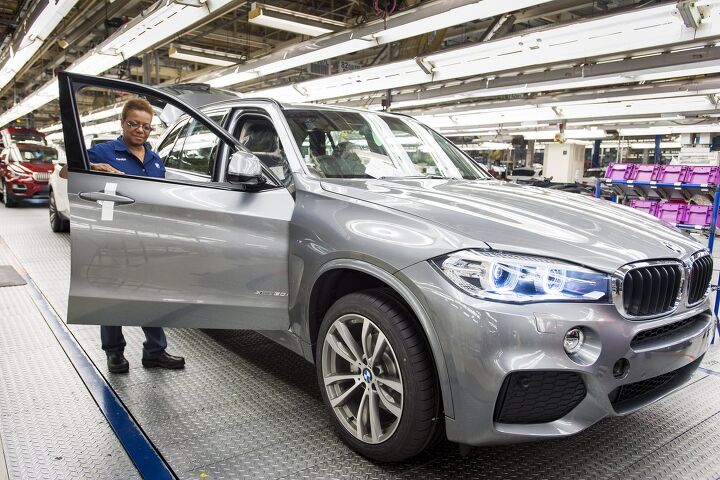

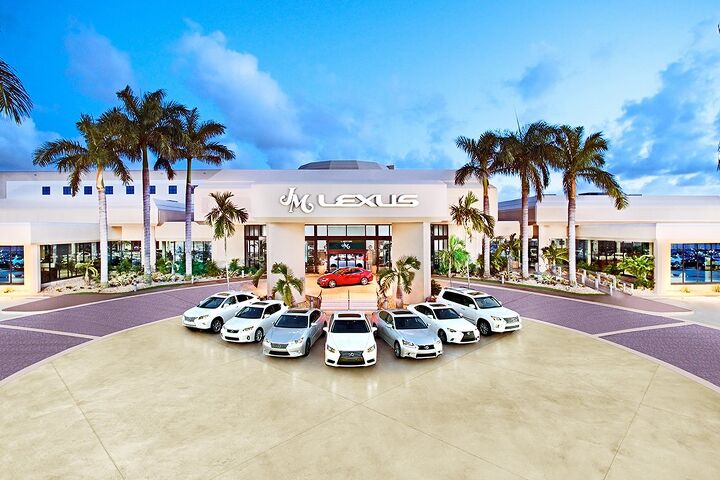

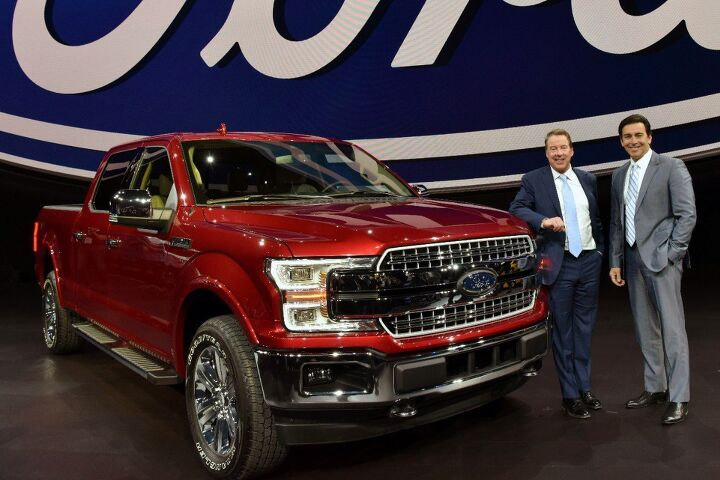
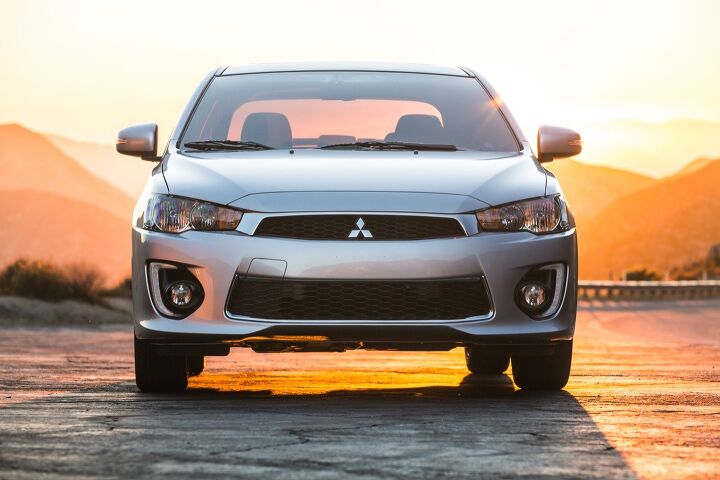
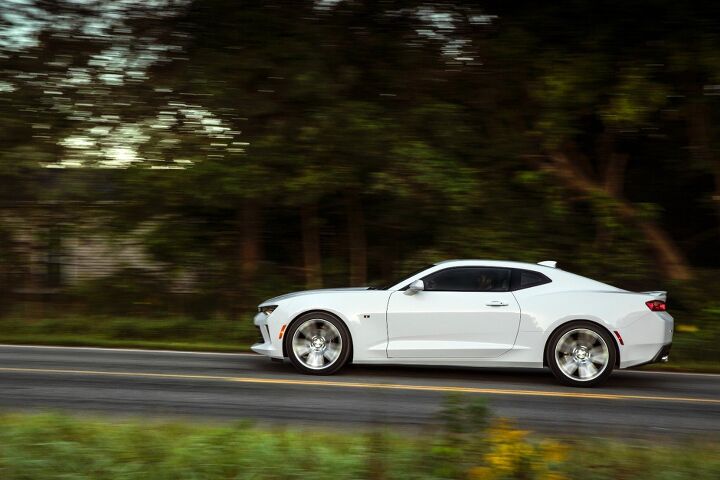







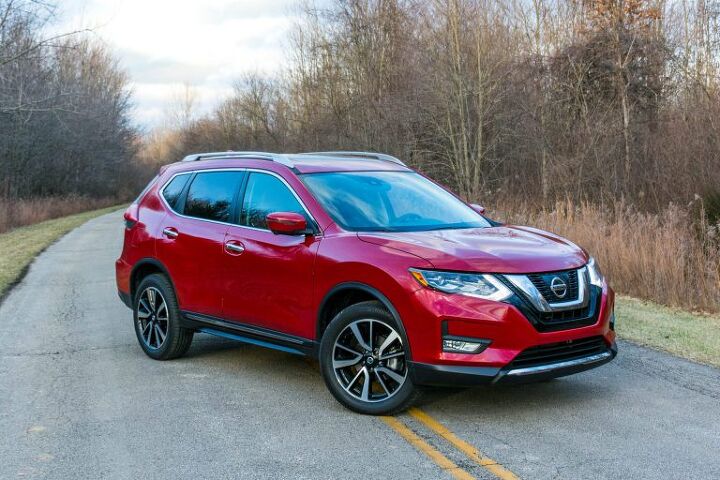


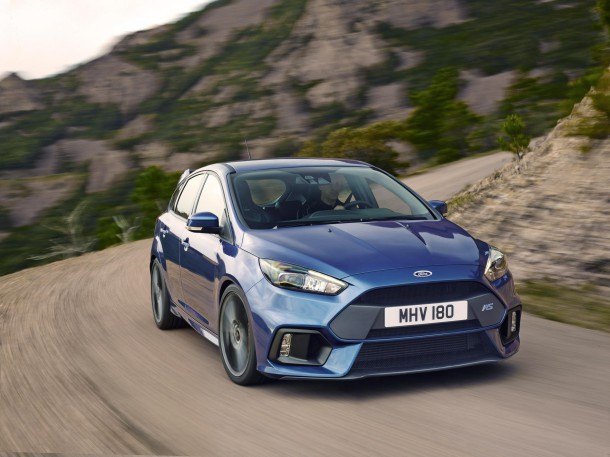

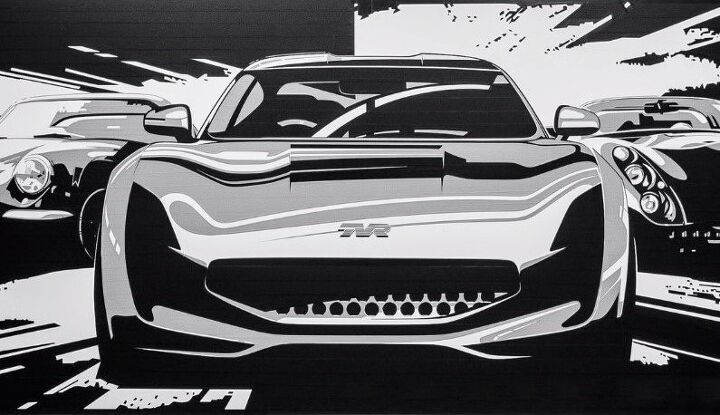


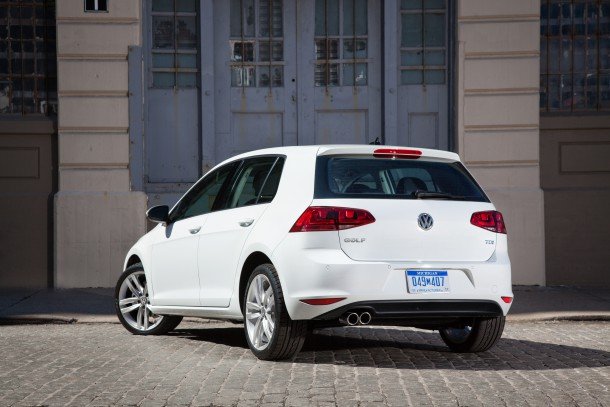
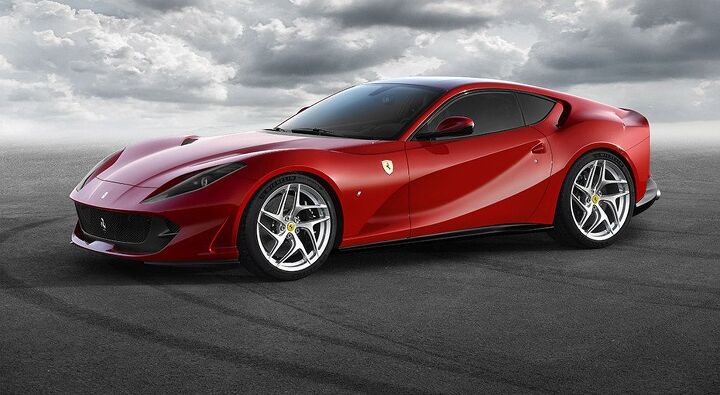
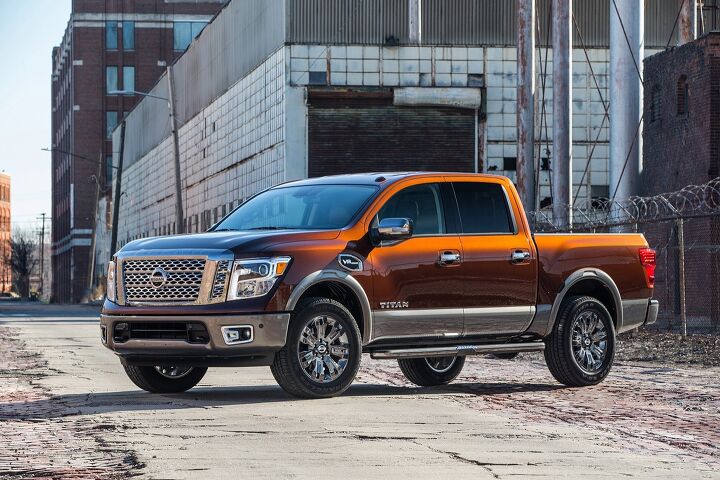



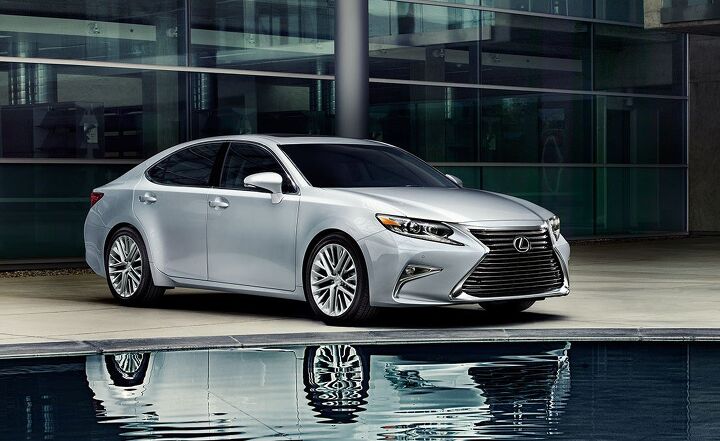





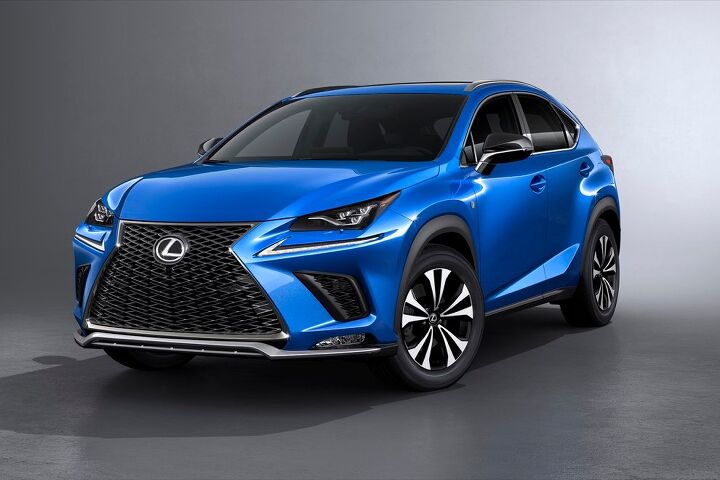
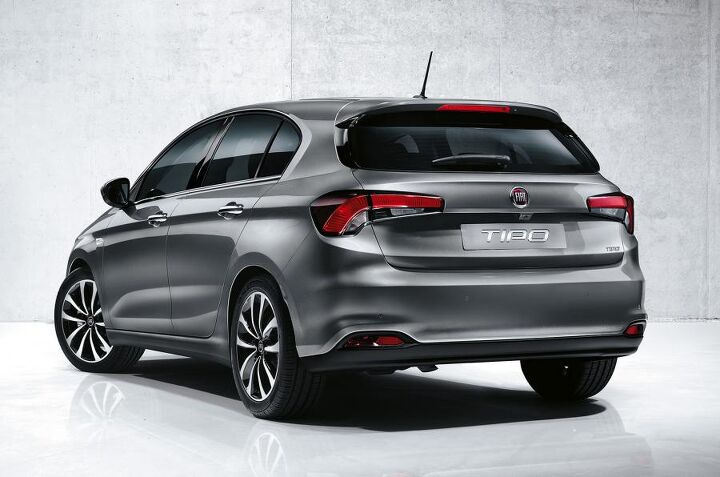















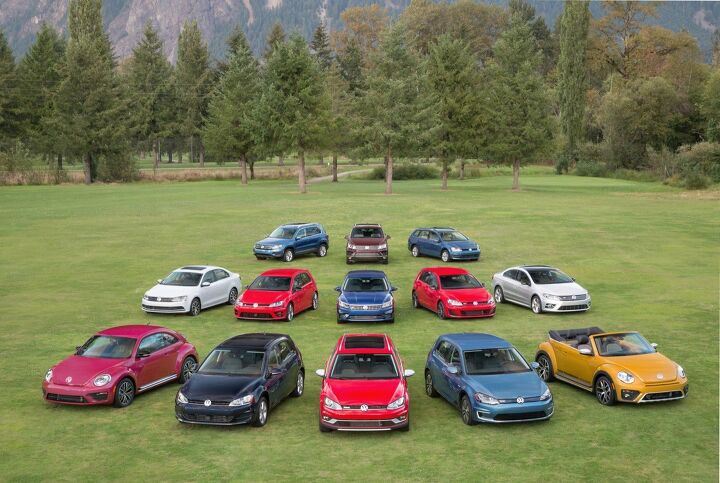
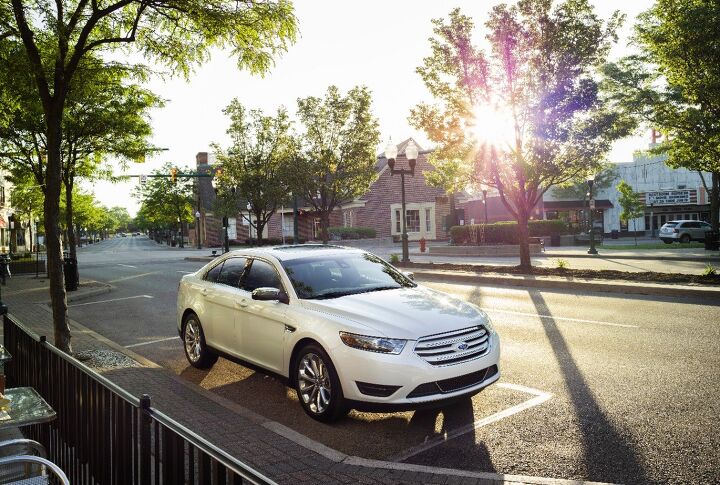


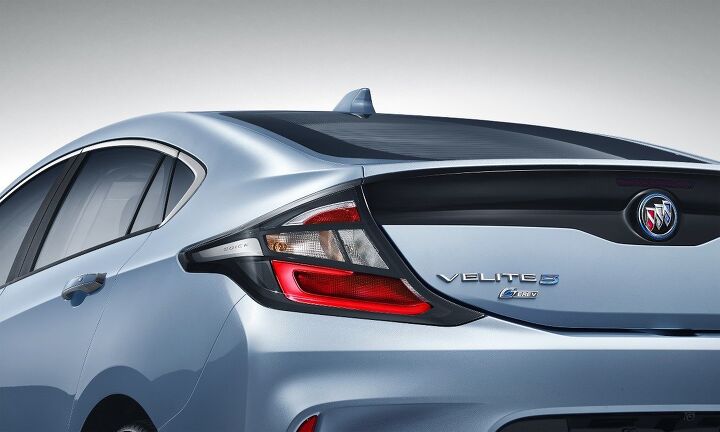













Recent Comments